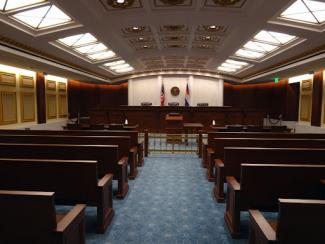
Courtrooms Are Physically Inaccessible
Courthouses are supposed to be 100% accessible to disabled people, including those in wheelchairs. But that j hasn’t always been the case. And for those who can make it to the courtroom, the arrangement itself is full of barriers, from surveilling police to dramatic partitions.
Data Barriers
There’s a ton of over complicated vocabulary, processes, and rules in the court system. Court data, despite being public information, is also often hard to access or disorganized.
Poor Language Interpretation Services
Many people aren’t fluent in English, especially when it comes to legal jargon. Courtrooms are supposed to have interpreters, but that doesn’t mean they always do - or that the interpreters are certified. And when interpreters make incorrect translations from English, those mistakes have a human cost.
No Digital Access
The Covid-19 pandemic meant that many courtrooms finally provided Zoom access, increasing transparency for everyone who couldn’t be there in person. But, along with removing mask mandates, Zoom access now hangs in the balance.
In theory, courtrooms absolutely should be more accessible to us. But when the system itself is meant to brutalize and incarcerate us, is it really a surprise that they aren’t?
We have the power to interrogate this even more, though. From movements to defund courts to abolishing prisons, we can push our imaginations even further.